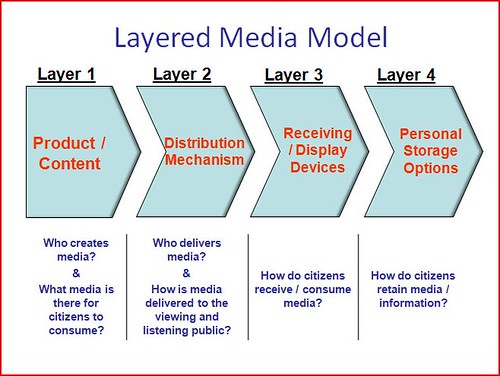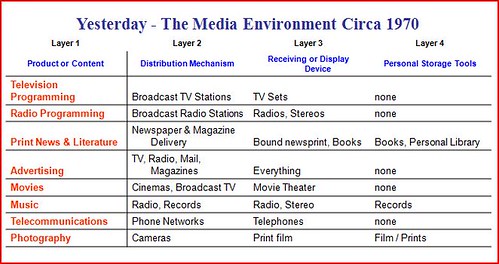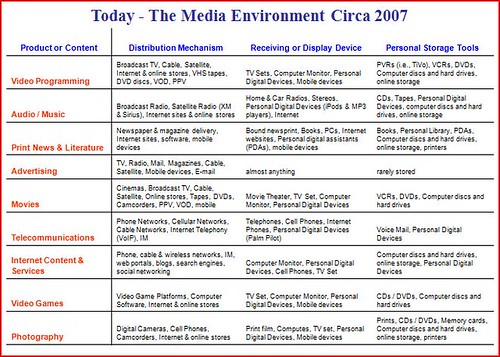I have embarked on a major new research project that I am calling “Media Metrics: The True State of The Modern Media Marketplace.†The goal of this project is ambitious: I hope to paint the most thorough and objective portrait of the true state of the modern media marketplace ever constructed. To do so, my PFF colleague Grant Eskelsen and I have spent months collecting and reproducing as many datasets, charts, tables and other information that we can get our hands on. I will be publishing individual installments online--some short, some long--discussing various trends and developments in the media marketplace. Later, I will pull it all together and create a massive online database for the public, the press, and policymakers to use as a resource.
Why am I doing this? For far too long in this country--especially in recent years--debates about the media, and public policies governing the media marketplace, have been based almost entirely on emotion, not evidence. Critics are fond of using a variety of subjective barometers to gauge the health of the media market. In a sense, that’s not really surprising since many of us feel a strong bond with media. It touches our lives in a variety of important ways. It informs and inspires on one hand and shocks and repulses on the other. Consequently, everyone fancies themselves a bit of an armchair critic when it comes to media.
But, in recent years, media criticism has been infused with an unprecedented level of raging emotionalism, so much so that it sometimes borders on mass hysteria. Many people—including a large number of regulators and public policy makers—argue that America’s media marketplace is in a miserable state. Some claim that citizens lack choice in media outlets, and that options are just as scarce as ever. Others believe that “localism†in media is dead, or that many groups or niches go underserved because of a lack of true “diversity†in media. Others argue that the market is hopelessly over-concentrated in the hands of few evil media barons who are hell-bent on force-feeding us corporate propaganda. And still others say that the quality of news and entertainment in our society has deteriorated because of a combination of all of the above.
It makes for good copy, but is any of it true?
As a student of journalism and media history, I believe that after objectively evaluating the evidence, a very different and unmistakable conclusion emerges than what most modern media critics suggest: From the perspective of the individual citizen, things are getting better all the time.
Generally speaking, the simplest barometer of the health of our media marketplace is to ask the corny old political question: “Are you better off today than you (or your parents) were XX years ago?†I believe there are a number of objective metrics than can be used to prove that we as a society are better off in almost every way possible. Indeed, I hope to show that we are blessed to live in a golden age of media. We have access to more inputs and outlets, more and better news options, more diverse information and entertainment sources, more local fare, more media gadgets, more ways to interact with our fellow citizens, and so on, and so on.
This new project will offers a wealth of supporting evidence about the true state of America’s media marketplace and prove this point.
Analytical Framework
In addition to introducing you to the project in this first installment, I also wanted to offer an analytical framework that researchers and other interested parties can use to evaluate the true state of the media marketplace.
Going back to my business school days in the early 1990s, I have long been enamored with the seminal work of Michael Porter of the Harvard Business School, who developed several analytical tools to evaluate the state of industry and markets. In addition to his “5-Factor Competitive Forces†model, Porter also devised what is known as “value chain†(firm-level) and “value system†(industry-wide) forms of market analysis. Those tools can help us think about how firms or industry sectors compete, innovate, and create value. They allow us to unpack the individual elements that make up a company or an industry and then determine the current status of those individual elements.
Borrowing some of the concepts Porter set forth in those models, I have constructed a different sort of value chain model in an attempt to analyze the health of the overall media marketplace. I believe the following “4-Layer Media Model†offers a useful way to evaluate the state of the media marketplace from one era to the next.
Exhibit 1

This model can help us get a feel for just how much the media marketplace has changed over the past few decades by breaking down media into four major components or layers:
Layer 1: Product or content options: Who creates media? What is it that citizens are consuming?
Layer 2: Distribution mechanisms: Who delivers media? How is it distributed to the viewing and listening public?
Layer 3: Receiving or display devices: How is media received (seen and heard) by consumers?
Layer 4: Personal storage options: How do citizens retain media and information?
Using these layers, we can analyze what the media marketplace looked like in a sample year, say 1970, compared to today. Here’s my attempt to do so for 1970…
Exhibit 2

… and for 2007.
Exhibit 3

[Note: Larger images are available on my Flickr page by clicking on the charts above.]
I apologize for the small font size, but there was just so much that needed to be included on the 2007 value chain that I had to shrink the font down to get everything to fit on one page. But that tells us something, doesn’t it! The very fact that I struggled to fit so much on this 2007 value chain illustrates the extent to which our media environment has improved for the better.
In every single layer, we have more and better options at our disposal. In the first (product or content) layer, we have more forms of media content being produced than ever before. The old analog world (print, TV and radio) of media scarcity has given way to a media cornucopia of unprecedented abundance (computers, Internet, blogs, video games, mobile devices, satellite radio, iPods, and much more, including even more of the old print, TV and radio sources).
Likewise, in the second layer of the value chain, the number of distribution paths or delivery mechanisms to the home has expanded considerably. And in the third layer, the number and nature of receiving and display devices used by consumers have changed dramatically since the days of black-and-white TVs, transistor radios, and black rotary dial telephones.
Finally, a look at fourth layer illustrates how many more personal storage options citizens have today. In the past, it was virtually impossible for citizens to store their media for extended periods of time (except for personal book and album collections). Today, by contrast, every type of media content can be stored and then consumed at our leisure wherever we find ourselves in this world.
Imagine traveling back in time and trying to explain to the average citizen of 1970 these changes. It would be difficult to even put it into words and concepts they could understand such that they could fully appreciate these radical new media content, delivery, consumption, and storage options. How would you explain blogging or podcasting to them? Or e-mail, RSS feeds, iPods or the iPhone, PDFs, IPTV, VoIP, TiVo, PlayStationPortable, or social networking? Think about it. I was born in 1969 and I still have a picture of my grandfather holding me in his arms while sitting in front of an old gramophone and a floor radio that was the size of small refrigerator. That was just 38 years ago. According to my mother, there were no other media sources in the home except for a weekly newspaper. I can’t believe I lived in that house! It’s just stunning to think how far we’ve come in such a short time.
Again, the installments in this series will illustrate exactly how far we have come and how much better off we as individuals and a society are today than ever before in terms of media options. And the analytical framework I have presented here will guide this endeavor. I will be examining developments in each media layer and providing datasets, charts, graphs, tables, etc., that illustrate the true state of the media marketplace.
As we go along, I invite you to tell me how I might improve my work or tell this story even more effectively. Because I believe there is a very good story to tell and I want to tell it right.
[Up next… In part 2, we’ll look at the growth of household access to various media technologies over the past 40 years.]
